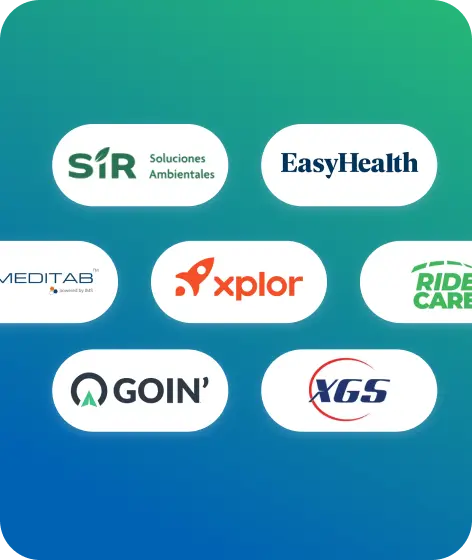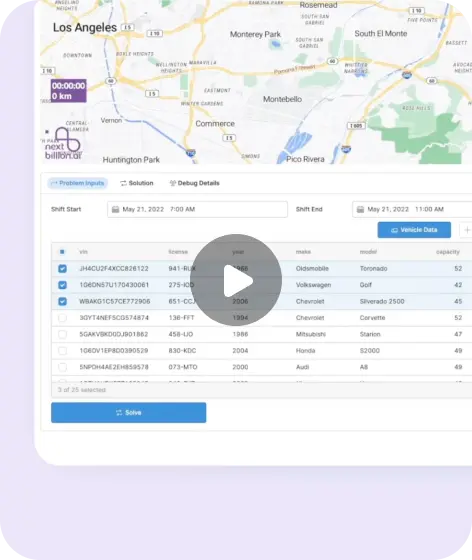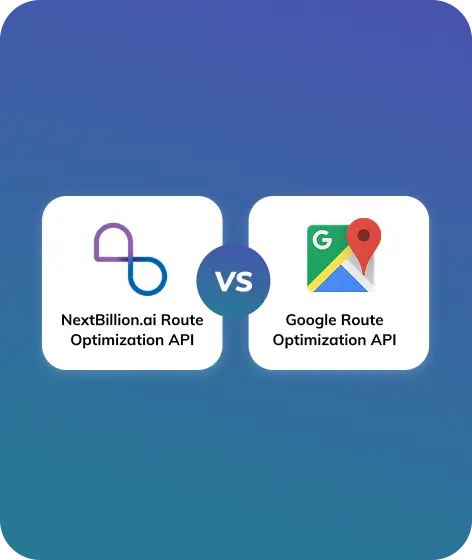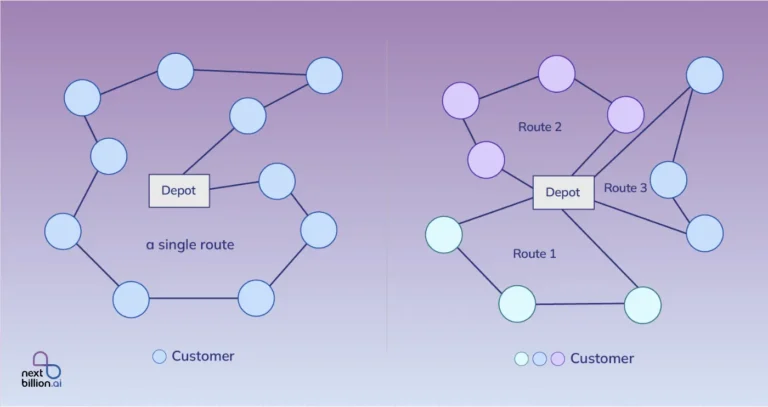
Table of Contents
In the highly competitive small business world, effective shipping processes can make or break profitability and customer satisfaction. Small businesses are using the best shipping software increasingly to streamline operations as e-commerce and digital retail continue to expand. The statistics clearly show this demand: the market was valued at approximately USD 1,623.8 million in 2020 and is projected to reach around USD 3,007.8 million by 2027, growing at a compound annual growth rate (CAGR) of 8.95%.
Worldwide, 90% of all businesses are small and medium-sized businesses. They are now uniquely positioned to gain from shipping solutions that enhance customer satisfaction, streamline processes, and lower shipping costs. Tools that are simple to integrate with online marketplaces like as eBay, Etsy, or Shopify have the potential to revolutionize the shipping process. They make it possible for businesses to satisfy the growing demands of their customers.
An effective shipping management system can make things easier for admins, and improve shipping while enhancing customer satisfaction, all of which can result in better reviews!
In this article, we will look at the best shipping software for small businesses, namely those that sell on platforms like Shopify, Etsy, eBay, and others.

Understanding Shipping Software for Small Businesses
Small business shipping solutions is essentially a specialized application made to streamline and optimize the shipping process for businesses of each size, but particularly for small businesses. It is more than just getting packages from point A to point B; it involves doing so efficiently, affordably, and with the best level of customer satisfaction. From order receipt to delivery, it streamlines complex shipping procedures. This software is the foundation for businesses that are looking to improve service delivery while reducing expenses and errors.
Why Small Businesses Need Shipping Software
Managing limited resources and satisfying customer demands for quick and affordable shipping represent unique logistics challenges for small businesses. These challenges are addressed by the top shipping software 2025.
As a result, they enable businesses to scale operations and deliver effectively. Key factors that make Shipping Software essential for small businesses
- Real-Time Updates for Transparency: Customers want real-time status updates on their orders. Small businesses can offer accurate shipment tracking with the best shipping software. This reduces customer concern and increases transparency.
- Effective Inventory Management: By integrating inventory management, advanced shipping management software guarantees that products are consistently stocked and prepared for shipment. It increases order accuracy and reduces delays.
- Cost-Effective Carrier Selection: Small businesses can choose the most economical shipping choices by using the rate comparison services offered by several shipping platforms. Additionally, certain solutions offer shipping savings.
- Streamlined Returns Management: Managing returns can be difficult, but shipping software makes it easier with automated return labels and real-time tracking. A seamless return process can increase customer loyalty.
Better Customer Experience: The customer experience is improved by quick, accurate, and affordable shipment. Businesses can meet these objectives and differentiate themselves from competitors by using shipping software.
Key Features to Look for in Shipping Software
The features offered by the majority of the best shipping platforms are basically similar. Make sure the solution you integrate allows customers to select the best delivery option and meets their demands. Explore the additional features that could help you build your store and meet your future business demands if you decide to expand into new markets.
- Carrier Integration: Most shipping software works with various carriers (e.g., USPS, UPS, FedEx, DHL). You can give your customers greater flexibility if your carrier support list is more varied.
- Rate Comparison: Some suppliers even allow your customers to check and compare the most affordable prices. This strategy is highly customer-friendly and essential, particularly when shipping internationally. Make sure your consumers can select the best alternative because delivery costs for cross-continent shipping may exceed the purchase cost.
- Tracking and Notifications: Every customer wants to be aware of the due dates for purchases. Use software that allows for real-time tracking. Another useful option that enhances the experience after a purchase is automated notifications.
- Analytics and Reporting: You can monitor shipping expenses, identify trends, and improve your shipping approach with the help of extensive reporting features.
- Automation Capabilities: You can save a lot of time and prevent errors while setting up your shipment processes by utilizing automation capabilities like batch label printing, shipping rules, and automatic order input.
Inventory Management: Take into account inventory management features, although they are not a must-have feature. It is available as an add-on for certain shipping software to help you manage orders and keep track of stock levels.
Best Shipping Software for Small Businesses in 2025
For small businesses looking to satisfy customer expectations and enhance operations, choosing the best shipping software is essential. Businesses need solutions that are customized to their needs and provide efficiency, cost savings, and enhanced customer experiences because of the expanding demands of e-commerce. To help small businesses in making informed decisions, we will look at the best 5 shipping software options below, including their key features, pros, cons, and pricing.
ShipStation

ShipStation is a popular solution for small enterprises due to its broad integrations and user-friendly user interface (UI). It offers reduced shipping costs from major carriers and streamlines order management with support for more than 300 platforms.
Its branded tracking and shipping labels boost professionalism and enhance the customer experience. ShipStation is the best option for multi-channel retailers who need to handle orders from various sales channels.
Key Features
- Custom Views: You can personalize the user interface with the custom views option. You can choose from a variety of interface sizes for your default account page with this option.
- Automation: Users can save time and money by personalizing the order fulfillment process with ShipStation’s automation capability. The software allows a collection of orders to have certain actions automated.
- Manage Multiple Carriers: To save you the trouble of logistics, ShipStation has partnered with several carriers. The purpose of this is to help with label printing, parcel tracking, and order administration. FedEx, UPS, Royal Mail, DHL, and Hermes are a few carriers.
- Order Management: You can import data from 40 channels and more with ShipStation. Every order can also have pre-configured shipping selections depending on branded labels, personalized packing slips, and other requirements.
Pros
- Support for dozens of global carriers and logistics providers.
- A user-friendly interface designed for seasoned owners of small and medium-sized businesses.
- Create shipping quotations and shipments with real-time price updates from linked carriers.
Cons
- Some features of higher-end plans may drop down.
- There will be additional costs for connecting carrier accounts you may already have.
Shippo

Shippo is a cost-effective solution for small businesses seeking robust shipping tools. Its multi-carrier integration and automation features make it easy to manage shipments, print shipping labels, and track deliveries.
Shippo’s international shipping support is particularly beneficial for businesses looking to expand globally. If you need a scalable shipping solution that supports a wide range of shipping volumes, the platform is well-suited for you.
Key Features
- Carrier rate comparison: Shippo allows you to check and compare the shipping charges of various carriers for the same shipment. This makes it simple to minimize your delivery expenses.
- Shipping API: Shippo provides a robust shipping API that lets businesses include shipping features straight into their own platforms and apps. Businesses that need a more specialized shipping solution or want to provide shipping capability to their customers may find this particularly helpful.
- Automated label printing: Shippo offers label printing services that are automated for all of your orders, including those that come from marketplaces such as Pinterest, eBay, and Shopify.
- Tracks shipments: For customers who want to find out the status of their shipments, the platform also offers a tracking option. Customers might receive email updates on the location of the products and when they should expect them to arrive.
Pros
- Shippo generates return labels automatically and sends them to courier partners, allowing for easy returns.
- Shippo confirms and validates the address before to physically shipping the merchandise out of order to prevent failed deliveries.
- Shippo supports numerous users on a single account and does not charge a monthly subscription.
Cons
- Although it lacks an international return label mechanism, the API makes it easy to handle international shipments.
- Shippo’s auto-filling feature adds the most relevant address instead of the nearest accurate address.
Easyship

Easyship shipping software, launched in 2014 and located in Hong Kong, offers over 250 shipping solutions in 100+ countries, making it an excellent option for retailers wanting to expand their global presence. To ensure a seamless and transparent shipping procedure, the platform provides a variety of solutions to manage shipping fees, taxes, and customs clearance.
With Easyship’s user-friendly interface, you can choose the most economical shipping solutions for your needs by viewing real-time shipping rates and delivery schedules.
Features
- Multiple Shipping Carriers: EasyShip allows businesses to ship both domestically and worldwide using several reputable shipping companies, such as FedEx, Aramex, UPS, DHL, and USPS.
- Printing Shipping Labels: EasyShip users can print shipping labels and all the customs documentation they need. Before printing the label, you can personalize your packing slips and other messages, and even get an accurate shipment cost.
- Multiple Shipping Locations: You can employ warehouses spread across many locations with EasyShip to speed up product delivery to customers without adding to the burden on your shipping service.
- Track Shipments: Customers can receive automated updates and tracking details about their packages using the EasyShip platform. There is even a special page for tracking each shipment to make tracking simpler.
Pros
- Seamless integration with numerous well-known e-commerce platforms, such as BigCommerce, Amazon, and Shopify.
- Businesses of all sizes can take advantage of the flexible pricing plans.
- Provides a dynamic solution for managing both domestic and foreign tax and duty rates.
Cons
- The maximum number of shipments that can be handled in a month is limited for three of the payment options.
- This platform is limited to businesses and retailers from a few selected countries.
ShippingEasy

As its name suggests, ShippingEasy makes shipping easier for small businesses. It helps organizations save time and money by providing them with strong automation capabilities and access to discounted courier rates. Its Shopify Seller Suite makes it easy to integrate with well-known e-commerce systems.
You can automate certain operations, such as creating shipping rules depending on order weight, destination, and other factors. You can also develop simple email campaigns and loyalty programs, which is a huge advantage for organizations trying to build strong customer relationships.
Key Features
- Multichannel Sync: With interfaces with over 60 retailers, shopping carts, and marketplaces, you can seamlessly manage orders from all of your sales platforms. Upload orders in bulk to your ShippingEasy account using CSV files.
- Shipment Tracking: Provide your customers with branded email confirmations that include shipment tracking information.
- Order Management: Print many or a batch of shipping labels simultaneously and process several orders at once. To make it simpler to pull products to fulfill orders, print pick lists.
- Dropshipping: Establish a shipment rule that automatically filters those orders and invoices them appropriately to connect with third-party drop shippers. You can still keep track of orders that are dropshipped.
Pros
- Competitive discounts are available from ShippingEasy, particularly for USPS, which can result in substantial cost savings for businesses.
- Shipping processes are streamlined by features like batch processing, automated workflows, and fast label printing, which increase productivity and save organizations time.
- Regardless of technical proficiency, users may easily access and utilize the software’s capabilities due to its intuitive design.
Cons
- It’s difficult to look through their shipping history.
- Compared to similar services, the monthly fees are higher.
Ordoro

Ordoro is a shipping service for small businesses based in Texas. Ordoro, an all-in-one shipping and inventory management solution created in 2010 by Jagath Narayan and Gary Carson, was created to meet the operational requirements of e-commerce businesses. The platform offers an integrated system for managing orders, inventory, and delivery by connecting with well-known e-commerce systems like Shopify, BigCommerce, and Amazon. With features like order splitting, barcode scanning, and bulk label printing, it streamlines fulfilment procedures.
Key Features
- Inventory management: If your business has complicated inventory management, Ordoro’s shipment management features—which include barcode scanning, automatic dropshipping, and multi-warehouse support—are perfect.
- Analytics: Ordoro allows you to monitor your income and expenses and then examine the data in subsets such as suppliers, areas, delivery options, and sales channels. This helps you understand how well your company is performing.
- Integrations: When shipping management software interacts with other company software, it operates at its peak efficiency. Ordoro provides more than 40 integrations with various business applications to achieve this.
- Robust Shipping: Ordoro provides all of these benefits for every order you place from every sales channel. Therefore, you can still manage and execute a customer’s transaction within your Ordoro app even if they place their order through your Shopify store rather than your website.
Pros
- Offers an unlimited monthly shipping label plan for free.
- Features several integrations with shipping businesses, marketplaces, and shopping carts.
- New sales channels are simple to add, and kit-building functionality is included.
Cons
- There are some regional restrictions on carrier integration.
- Compared to subscription plans, the free version offers fewer features.
How to Choose the Best Shipping Software for your Small Business?
Small business owners may find it difficult to choose the best shipping software due to the wide range of solutions available.
An effective tool makes logistics easier and gives businesses the ability to reduce costs, increase productivity, and create stronger relationships with their customers. We have outlined the key considerations to take into account when choosing the best shipping software platforms for your requirements to help you in making this decision.
Your goals
The first step to a successful e-commerce shipping strategy is understanding your objectives. So, what do you hope your software will help you achieve? Would you like to:
- Manage your inventory better?
- Make your purchase orders more efficient?
- Improve the way you track your inventory?
- Cut down on the cost of shipping?
- Boost the experience of your customers?
Determine your most critical shipping concerns and look for solutions that can help resolve them.
Smart integrations
To ensure a smooth transition, your shipping software should ideally interact with your existing platform and workflow. Look out for solutions that will automatically and provide real-time integration.
- Import orders from several sales channels.
- Update the stock levels.
- Communicate to your warehousing and inventory management systems.
- Communicate with your accounting software, such as Quickbooks, or ERPS.
For further flexibility and customization, certain software programs integrate with their shipping API. Comprehensive reporting tools can improve inventory control and help you in making more informed decisions.
Simplified label printing and shipping workflows
You want a shipping solution that will streamline your process and save you time if you are managing order fulfilment and shipping alone (or with a small team). Consider software that provides:
- Batch label printing
- Integrations with scales as well as printers
- Streamlined shipping workflows
- Tracking on the dashboard
By reducing the likelihood of errors and saving you time, these features will enable you to complete orders more quickly. Spending a shorter time on shipping and order fulfilment allows you to focus on customer service and providing the greatest products to shoppers.
Discounted shipping rates
The cost of shipping can reduce your profit margin. This issue can be fixed with the help of the appropriate shipping software. To help merchants reduce costs, several suppliers give pre-negotiated shipping discounts. Along with savings, search for solutions that provide transparent cost comparisons and recommend less expensive alternatives that don’t compromise delivery quality.
Compare Pricing Models
It is important to understand the cost implications of various shipping software, particularly for small businesses with limited resources. Consider plans that provide tiers of pricing according to shipment volumes or free trials.
Free plans could sound appealing, but they sometimes have few features. Make sure the software strikes a balance between pricing and features, including access to discounted carrier rates or extensive analytics in higher-tier programs. As your company expands, this will guarantee that you get value for your investment.
Returns management
Shipping management doesn’t end when items leave your doorstep. Many things can happen between pickup and delivery. Packages may be misplaced, shipments may be delayed, or a consumer may choose to return a product. Having a shipping solution that can manage these “reverse logistics” post-shipment problems is beneficial.
Seek solutions that will make it simple for you to handle returns and non-delivery reports. To enhance the customer experience, numerous platforms have integrated return portals, automated progress updates, and return label production.
Check Customer Support Options
Having reliable customer service can save your life, particularly in the event of unexpected issues. Make sure the software you have selected has a variety of support channels, such as phone, email, and live chat.
Additionally, search for the software company’s knowledge base, tutorial videos, or webinars. These self-help tools can cut down on downtime and enable your employees to solve common problems on their own. Good customer service builds trust and guarantees the software’s seamless adoption.
In-depth reporting features
You may use shipping software for more than just printing labels and comparing rates. You can gain important insights into your shipping operations with the use of advanced reporting tools. Analytics, for example, can be used to track shipping expenses, determine which products are performing effectively, and assess delivery success rates. You may improve resources, make data-driven decisions, and maintain market competitiveness with the help of these insights.
To make your life easier, a lot of providers additionally include comprehensive reporting features, such as:
- Inventory reports
- Multi-channel sales reports
- Inventory forecasts
A key initial step for small e-commerce companies looking to increase logistics effectiveness is selecting the appropriate shipping software. You may identify a tool that meets your current demands and promotes your long-term growth by carefully considering four factors: your objectives, integration requirements, automation capabilities, and support options.
How can Route Optimization Software, like NextBillion.ai can be integrated with Shipping Software for Maximum Efficiency?

Shipping software helps small businesses manage labels and track packages. But in order to stay efficient at scale, businesses need better control over how those shipments are routed and delivered. This is where integrating a route optimization platform like NextBillion.ai into your existing shipping software can create a smarter and more profitable logistics process.
NextBillion.ai allows small businesses to improve delivery accuracy and speed by generating optimized delivery routes based on real road conditions and delivery time slots. This means businesses can assign the right carrier and schedule for each delivery while still keeping the shipment organized within their shipping software. When both systems work together, businesses reduce delays and avoid misrouted shipments.
For businesses managing orders across different zones, NextBillion.ai offers custom routing solutions that match specific delivery rules and constraints. The Distance Matrix API from NextBillion.ai allows small businesses to identify the best possible sequence of deliveries while reducing empty miles and fuel costs. This integration supports the business goals of faster delivery and lower operating expenses.
When paired with shipping software that already manages labels and carrier rates, NextBillion.ai adds route-level intelligence to the decision-making process. This helps small businesses move from simply printing labels to making each shipment more time-efficient and less costly. Real-time delivery adjustments are also possible, which helps small teams stay responsive and in control of their logistics.
NextBillion.ai also supports geofencing and last-mile customization, which are useful when delivery zones have timing restrictions or limited access. These settings can be configured to match the business’s internal rules and reflect directly into their shipping dashboards. The result is a leaner workflow and better coordination between shipment scheduling and delivery execution.
For small businesses, every delivery must be quick and affordable. Combining shipping software with route intelligence ensures that operational speed does not come at the cost of rising expenses or delivery mistakes. This is how NextBillion.ai supports small businesses that want to grow with control and clarity built into every shipment.
Conclusion
Shipping software has evolved into an important strategic tool for small businesses. The ideal solution streamlines your operations and gives you the ability to satisfy customer demands, manage costs, and promote your growth. Shipping solutions serve as an intermediary between your business as well as your customers during a time when speed and convenience are essential. At every touchpoint, they guarantee satisfaction and trust.
Keep in mind that the ideal shipping software is the one that best suits your particular business requirements as you evaluate your options. You may test drive several of these solutions to determine which is best for your business by taking advantage of their free trials or free account options.
About Author
Bhavisha Bhatia
Bhavisha Bhatia is a Computer Science graduate with a passion for writing technical blogs that make complex technical concepts engaging and easy to understand. She is intrigued by the technological developments shaping the course of the world and the beautiful nature around us.












